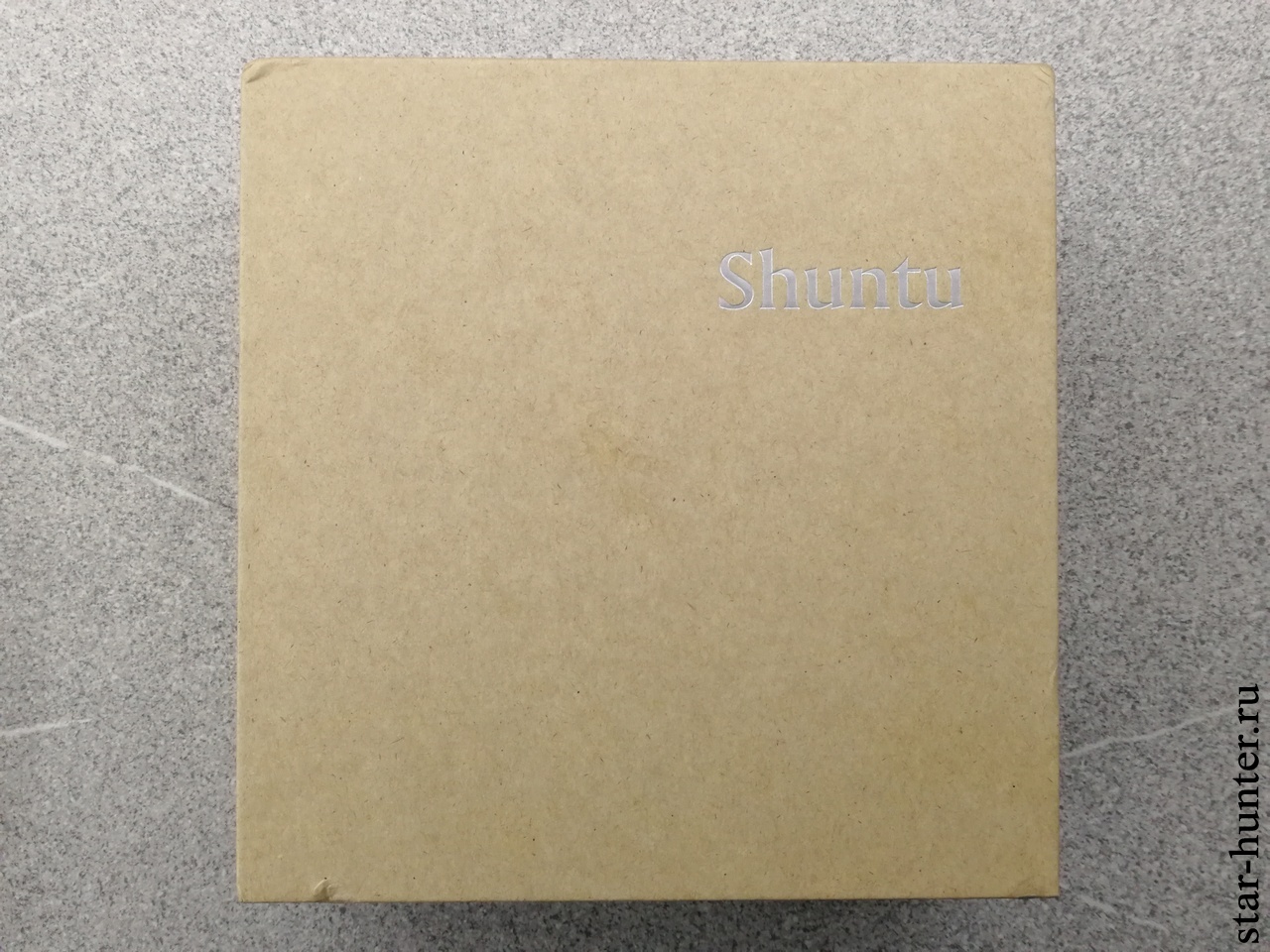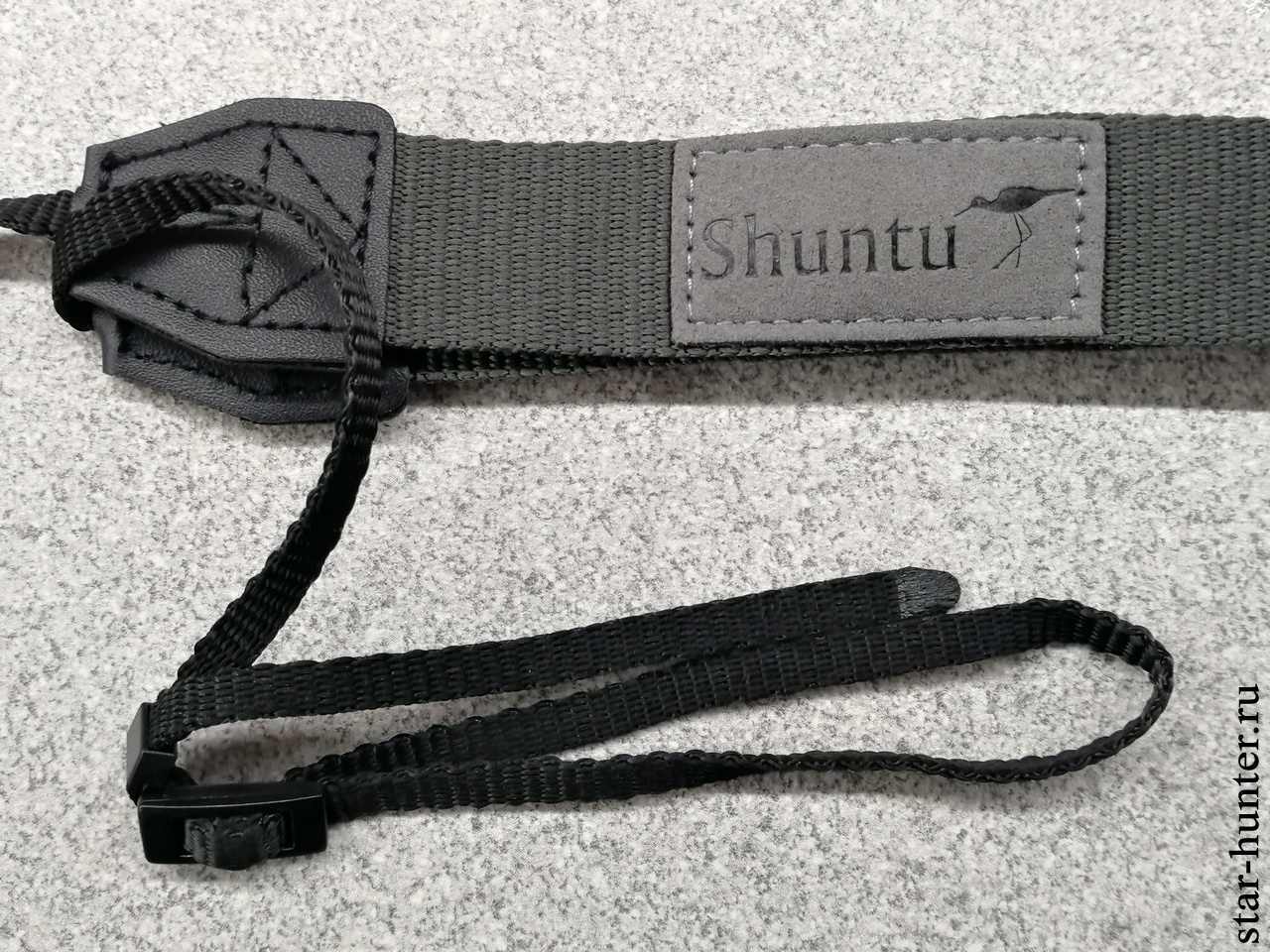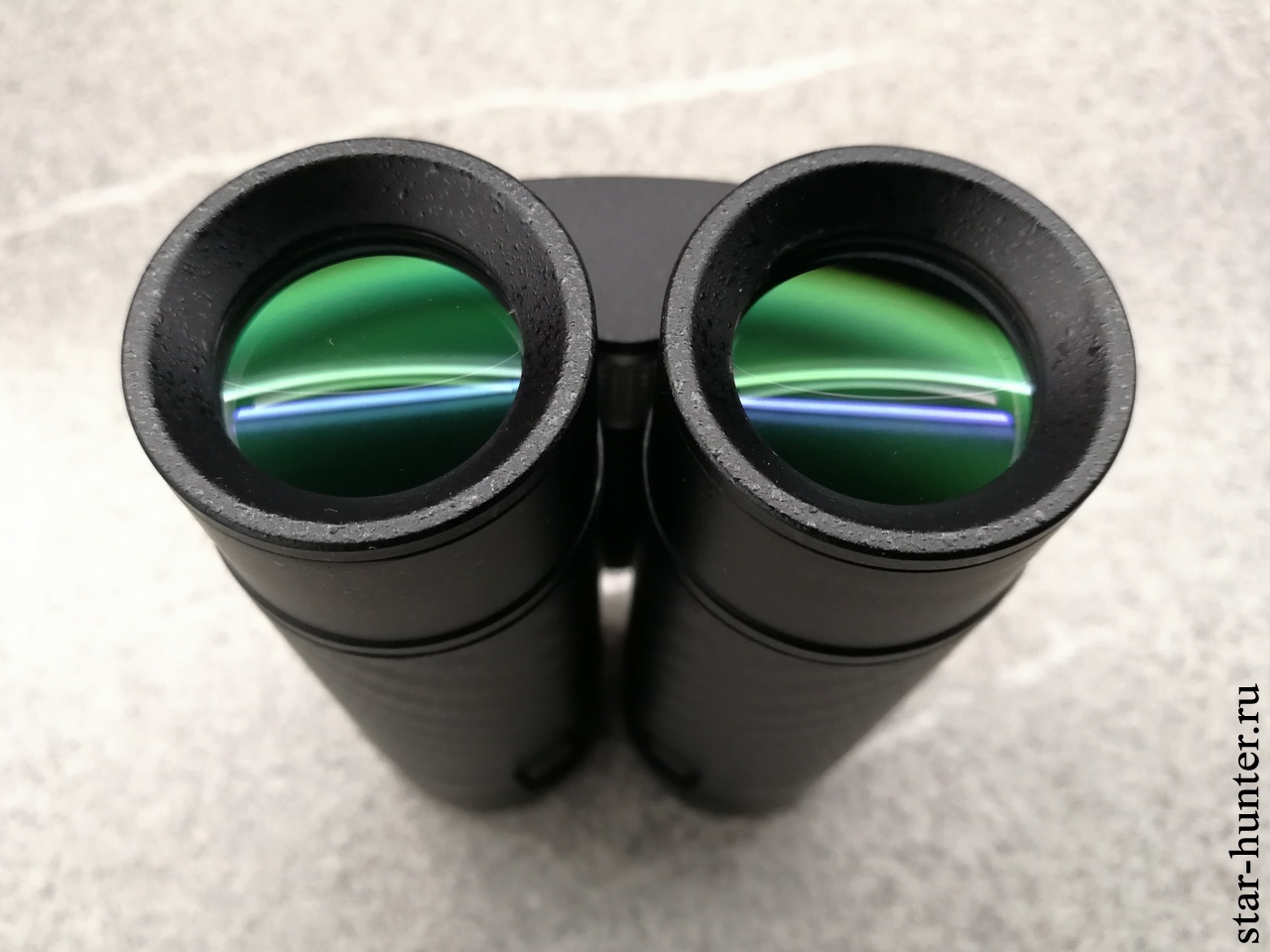Shuntu 8×20 ED it is small binoculars with 8x magnification and 20mm objective lenses. Due to the folding design, the binoculars are very compact in the transport position. Due to the small exit pupil (2.5 mm) Shuntu 8×20 ED is designed primarily for observations in good light conditions (for example, during the day). Of course, you can also look through such binoculars in the evening or at night, however, the image of dim objects will be less bright than in binoculars with the same magnification and light transmission, but with a larger aperture (for example, 8×32).

Similar binoculars of the previous generation are still on sale, also marked Shuntu 8×20 ED.

In the new version, which I will talk about in the review, the manufacturer moved the diopter correction of the right eyepiece to a separate drum, changed the location and shape of the main focusing drum, improved light transmission and changed the design of the eyecups. It would be interesting to test the previous version of the binoculars – it is possible that both the focusing drum and the ocular diopter correction will be even more convenient than in the new version. There is also a 10×25 version of both the previous and the new generation, but personally I was more interested in binoculars with the 8×20 formula.
The manufacturer claims the following specifications:
Model L0820
Magnification: 8x
Aperture: 20 mm
Eyepiece lens diameter: 16.8 mm
Minimum focusing distance: 2 meters
Phase coating: yes
Lens coating: SMC
Field of View (at 1000m): 119 meters / 375 feet.
Bracket interface: photo tripod adapter.
Eyecups: adjustable (twist up).
Diopter adjustment: for the right eye
Eye relief: 15.8 mm, (or 13.6 mm, see below)
Transmittance: 95% (other source says 91%)
Focus system: central
Exit pupil diameter: 2.56 mm
Prism material: Bak-4
Waterproof: yes
Prism system: ridge (perhaps a prism with a roof is meant).
Length: 97 mm.
Weight: 215 grams.
Size type: small.
In the box
The binoculars are delivered in a nondescript cardboard box with the inscription Shuntu and a couple of stickers (characteristics and a QR code).


Interestingly, the sticker and the official website show different eye relief values (出瞳距离 15.5 mm)
The box contains binoculars, 4 identical rubber covers (for lenses and eyepieces), a carrying bag, a cloth bag, a cloth for cleaning optics, a neck strap, and instructions with a warranty card. No defects or damage found.



The carrying bag is large enough (121 x 80 x 70 mm) – probably to fit the binoculars in it along with the neck strap. The bag has a hole for attaching to a waist belt. The inside of the bag is lined with soft material (neoprene?). The neck strap is about 25 mm wide – it is too long – I had to cut it about 10-15 cm from each end.


Housing
The binoculars are really compact. The lengthwidthheight with covers is only 104 x 64 x 43 mm – about the size of a double pack of cigarettes.


Part of the housing is metal (magnesium alloy is declared), part is made of plastic and rubber. There is no serial number, information about the country of manufacture on the body of the binoculars. The diameter of the tubes is 29.6 mm.
Weight without covers: 234 gr.
4 caps: 15.8 gr.
Cover: 29.2 gr.
Belt: 20.3 gr.
Total: 299.3 gr. Slightly lighter than a 0.33l soda can.
The halves of the binoculars move apart with little effort. Be careful when unfolding the binoculars so as not to pinch your fingertips. Changing the interpupillary distance is carried out by moving the halves of the binoculars apart and moving them apart. The measured range is 35-73 mm.
A metal ribbed focusing drum is located at the front of the binoculars, diameter 16.2 mm, . Rotation – 1 full rotation and 3/4 more (630 degrees). Rotates a little tight with a quiet champing sound. The margin for myopic people is large – I think up to -5 diopters for observation without glasses is definitely enough. Due to the location of the drum in front, you have to focus with the middle or ring finger, or both the ring (top) and thumb (bottom) fingers at the same time. Focusing is a bit unusual, but there is no backlash or channel desynchronization. The minimum focusing distance turned out to be 1.22 meters, but it is uncomfortable to look at from such a distance, since you have to squint your eyes too much.

Closer to the eyepieces is a plastic drum for diopter correction of the right eye, diameter is about 10 mm, rotation is almost a full turn (about 330 degrees). On the drum there is an inscription 8×20, signs – and + are visible on the body to the left and right of it. In my copy, the zero position of the additional drum is set correctly. However, the owner of the same binoculars told me that his zero position is incorrect.

At the top of the binoculars is a metal bird logo with the inscription “Shuntu”.
At the bottom there are two “lugs” for a neck strap.
Retractable metal eyecups with glued rubber rings, diameter 29.5 mm. The eyecup extends by 10 mm. For the first twisting of the eyecups, I had to use force, after that they began to be adjusted much easier. This feature is also relevant for other copies of this model of binoculars. To make it easier to unscrew the eyecup, try doing it with the cap on.


If the binoculars are placed horizontally, they will rest on the lugs of the neck strap and the front of the body. However, it can easily slide off a smooth surface. It may be necessary to attach thick rubber rings to the lenses and eyepieces – they will also perform an anti-slip function and partially protect the binoculars from mechanical damage.
No adjusting screws were found outside the case.
In general, there are practically no complaints about the mechanics – everything is made very high quality – no backlashes, no defects.
Optics
The lenses are exactly 20 mm in diameter, recessed by about 4 mm relative to the front lens. I also performed a test with a flashlight – I shone it from the side of the eyepiece and measured the size of the light beam at the exit from the lens, it turned out to be 20 mm, that is, the aperture is not cut by prisms. Coating – emerald green and lilac. There are about a dozen small light-protective diaphragms between the lens and the focusing lens. The highlights from the focusing lens and the prisms are yellowish green – some brighter, some dimmer. Checking with a polarizing filter showed that the phase coating is present.

The eye lenses are convex, 16.8 mm in diameter, recessed by about 5.3 mm relative to the eyecup. Coating is emerald green and yellowish green. The measured field of view of the eyepieces is 51.5 degrees. The apparent field of view, measured from the image of the Moon, was approximately 6.5 degrees (disregarding distortion!).


The eye relief of the folded eyecup is about 10 mm, the total eye relief from the lenses is about 15.3 mm. The size of the exit pupil is about 2.6 mm + -0.1 mm (measured with a caliper). Observations with glasses are better with twisted eyecups. Exit pupils are round. Blackening is good, there are practically no glare around the exit pupils. But the sun’s rays form additional glare on objective diaphragms, they can be seen through the eyepiece under certain conditions.



Image
The first thing that caught my eye was the excellent alignment. The picture does not double, the eyes do not get tired, when observing distant objects, the edges of the apertures of the left and right eyepieces are reduced to one circle. It’s quite comfortable to watch. During the day it is harder to catch the exit pupil, especially unusual after 8×32 or 8×56 binoculars, but I quickly got used to it. The second thing that I immediately noticed was a fairly sharp image across the field (about 50%), then a gradual deterioration in sharpness towards the edge due to the curvature of the field. But astigmatism and coma are very small – when refocusing, the edge is sharp and detailed. There is a noticeable lateral chromatic aberration across the field. Longitudinal chromatic aberration was not detected on the axis. Also visible pincushion distortion.






When tested in the light, a distortion of the color rendition (slight yellowness) was found. The maximum light transmission is in the red region, slightly lower in the green region, and noticeably lower in the blue region of the spectrum. However, the distortion is not evident to the eye and does not interfere with observations.

The measured magnification from images through binoculars was 7.9x + – 0.1x.
The image brightness is suddenly high – the tiny Shuntu 8×20 ED turned out to be brighter than the inexpensive Olivon 8×26 with incomplete coating and without a phase coating. In the evening, at dusk and in the illuminated part of the city, the binoculars are very good in terms of brightness for their parameters. But at the same time, the inexpensive Veber Prima 5×20 turned out to be lighter – both in the picture and in light transmission.


When testing across the sky, I didn’t find any rays from lanterns or bright stars. The moon is sharp, large craters are clearly visible. Jupiter’s moons are immediately visible, the planet’s disk is also detected. There is a hint of an elongated shape of Saturn. The bright stars in the constellations are clearly visible, so binoculars are quite suitable for exploring the constellations. Even managed to find a globular cluster M 13 in Hercules. But, of course, in 8×32 and especially 8×56 binoculars, the picture is much brighter, and you can see more stars.

Summary:
+ light and compact
+ great mechanics
+ sharp on axis and over most of the field of view
+ excellent phase correction
+ aperture and magnification correspond to the declared
+ fully coated
+ can be viewed with glasses
+ a large supply of diopters for myopic.
-color distortion (but personally it doesn’t catch my eye)
-I would like eye relief a little more for observation with glasses
– there is no tripod mount, but, in principle, with this form factor, it is not really needed
– slight curvature of the field, pincushion distortion, lateral chromatic aberration is noticeable
– kind of ergonomics.
– the neck strap is too long.
The nuances include small covers, they are easy to lose, they are not fixed on the binoculars. However, I still don’t see any other solutions for this form factor, except for flip-up covers for lenses from optical sights, or mini-caps with a rubber ring. The focusing drum takes some getting used to. Well, the first twisting of the eyecups made me a little nervous.
As for ergonomics and ease of observation, due to the small eyecups, when observing without glasses, it will not be possible to rest the binoculars in the eye sockets, which significantly worsens the stability of the image. I found the following solution – when observing, move the index finger of one of the hands closer to the eyepieces and rest your forehead on it.
In general, I really liked the binoculars, I got used to it quickly. Suitable for both adults and children. A great option for a traveler when you need a sufficiently high magnification with minimal dimensions. In the future, I plan to always take Shuntu 8×20 ED binoculars with me on long trips. Recommend!
I bought binoculars from the World Telescope Store Store on aliexpress.
Do you have any questions? Ask in the comments.
Реклама: ООО “АЛИБАБА.КOМ (РУ)” ИНН 7703380158
Спасибо за обзор!